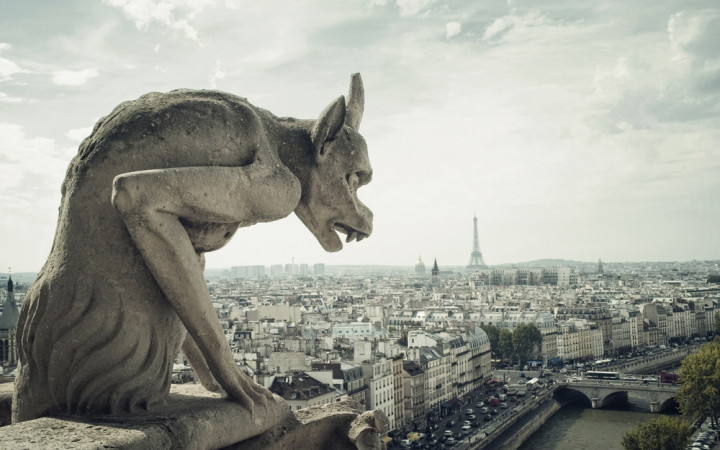Today’s Wonder of the Day was inspired by Atharv. Atharv Wonders, “Architecture ” Thanks for WONDERing with us, Atharv!
Have you ever felt like someone was watching you? Maybe you're wandering around the streets of New York City, enjoying a gorgeous day looking at the many beautiful examples of architecture all around you. But you just can't shake the feeling that there are eyes following you wherever you go.
Maybe that's because there are…if there are gargoyles around! If you look up, you might be able to spot some intriguing stone creatures perched atop the roofs of old buildings. You may be WONDERing what these creatures are and why they're there.
Gargoyles are carved stone creatures known as grotesques. Often made of granite, they serve an important purpose in architecture. Other than providing interesting decoration for buildings, they contain spouts that direct water away from the sides of buildings.
Like modern gutter systems you might see on houses or newer buildings, gargoyles prevent rainwater from running down stone walls, eroding the mortar that holds a building together. Architects often designed buildings with multiple gargoyles to direct the flow of rainwater.
Many gargoyles feature troughs cut into their backs to catch water. The water that's caught is usually directed out of the open mouth of the creature. Gargoyles usually have an odd, elongated shape, because their length determines how far from the building's walls the rainwater is deposited.
The word gargoyle comes from the French word gargouille, which means “throat" or “gullet." This probably comes from the gurgling sound of the water as it passes through the gargoyle and out its mouth. Some legends hold that gargoyles also protect against harmful spirits.
Gargoyles have been used for hundreds of years. Ancient Egyptians usually created gargoyles in the shape of a lion's head. Other popular animal gargoyles were dogs, wolves, eagles, snakes, goats, and monkeys.
Over the years, many other types of creatures have been used as gargoyles. For example, some gargoyles are humans, such as monks, while others are combinations of humans and animals. Unusual animal combinations are sometimes called chimeras. Some popular chimeras include griffins, centaurs, harpies, and mermaids.
Some of the most famous gargoyles in the word sit atop cathedrals, such as Notre Dame in Paris. Some experts believe they were popular on churches because of the widespread belief that they protected against evil spirits.
After the eighteenth century, gargoyles became much less common, as more modern drainpipes were developed. Occasionally, some buildings would still be built with gargoyles, but they often became more decorative than functional.




